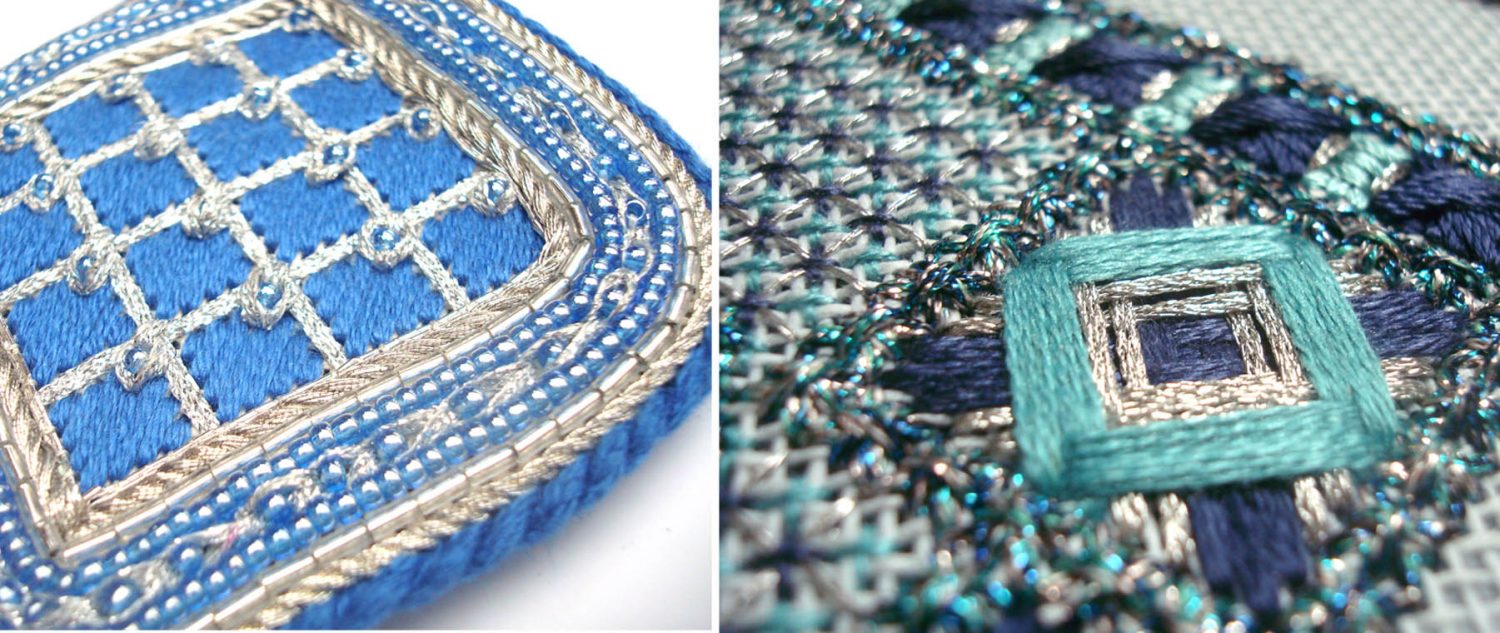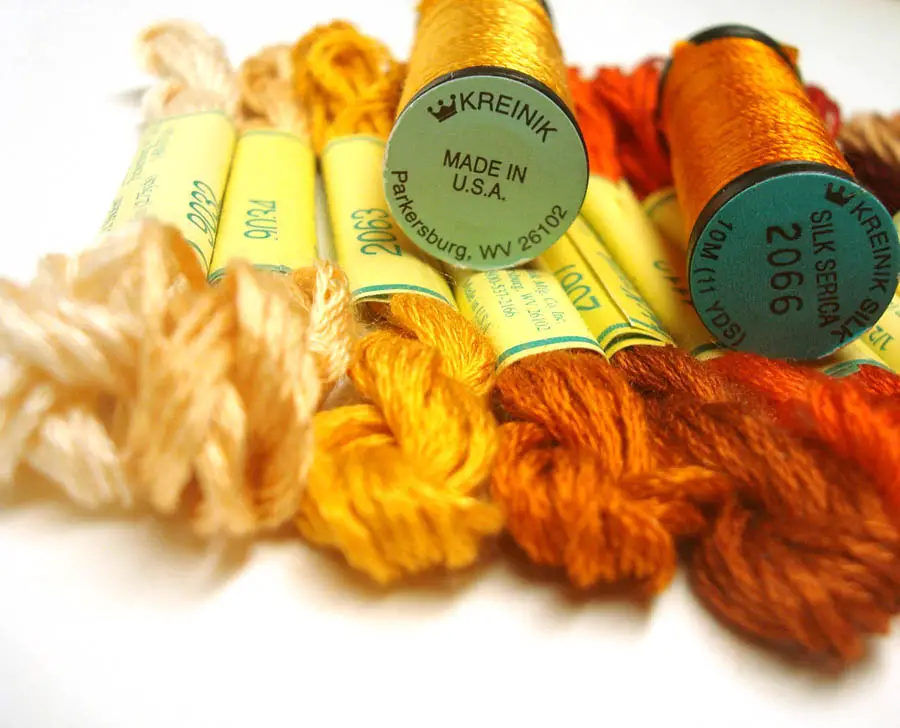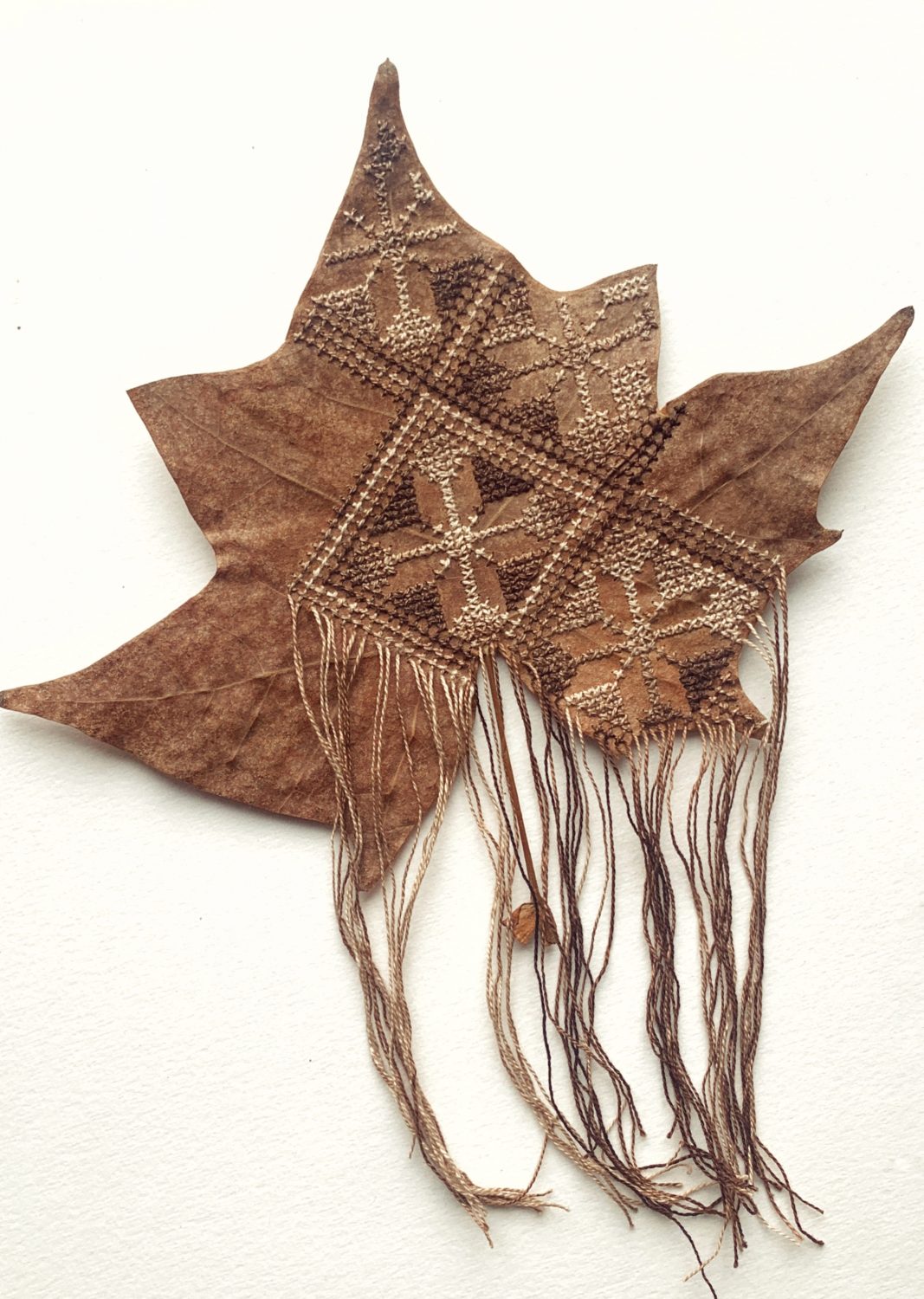It’s Kreinik Calling! where Dena Lenham from Kreinik Manufacturing Company shares inspiration and innovation with threads!
There’s one thread type that has stood the test of time—it has been used since embroidery began, practically. It had an affair with silk thread in a few cultures, then came it’s wool-complement years, back to silk, and so on. Now, in our age of fiber affluence, it is rising in popularity again, although it never went away in guilds, artisan schools, and textile conservation. I’m talking about real metal thread, and it’s gorgeous.
For surface embellishment, real metal thread offers today’s needleworker a few exciting qualities:
- Light, since it is a metal
- Dimension, since it sits on the surface
- Texture, since it comes in smooth or faceted varieties
- Historical significance, since it has been used in embroidery for centuries.
It can also offer today’s stitcher a little frustration since it can be hard to find and expensive. There are not that many companies making real metal threads anymore, and with the price of silver and gold high in many economies, accessibility can be an issue.
These negatives have plagued needleworkers for about 50 years, and they are why the Kreinik family began making metallic threads back in the 1970s. Metallics are synthetic versions of real metals, so they are less expensive, readily available, and tarnish-free. I’m all about metallics, but you know that from my other columns. Let me tell you today about something in between: Japan Thread, a synthetic fiber that has a percentage of real metal in it—and it looks gorgeously similar to real metal threads.

Japan Threads have a history too: centuries ago, real metal was pounded down to a super thin layer and wrapped around horse hair. The concept is the same today: a thin layer of synthetic metallic is wrapped around a polyester core. Since these are wrapped threads, you don’t stitch in and out with them as you would metallic floss (at least not much, only for specialty stitches). You lay them on the surface of your fabric or canvas and couch them down with a matching (or contrasting, for fun) color of a thinner fiber. Couching is a simple, easy, and versatile stitch: it’s basically just tacking down a larger thread, and can be a simple straight stitch or a decorative stitch depending on your design goals.

Kreinik’s line of Japan Threads includes several sizes, listed here in order of thinnest to thickest: Japan #1 (the thin Cord-like fiber you can use to couch the thicker ones), Japan #5, and Japan #7. In addition, the company makes Japan thread into Braids of various sizes plus two sizes of flat ribbon. (“Braid” is a fancy word for, well, a thread; just use it straight off the reel, stitch and go.) Having many sizes available in the Japan Thread line means you can stitch a variety of real metal embroidery looks, in a variety of stitches, for the utmost variety of stitching options.

Take a look at these photos to see how beautiful Japan Thread can be, and how similar they are to actual real metal threads—you can even use them next to real metal threads as complementary textures. They won’t tarnish like real metals, but you do want to take some care: dry clean projects embellished with Japan Threads, and store them in acid-free tissue paper (I’ve seen yucky things happen when rubber bands are wrapped around Japan spools).


Long story short: try Japan Threads as an alternative or complement to real metal threads. Pick out Japan #5 or #7, get Japan #1 to couch them, and start experimenting today. You will love the way they look: rich, colorful, illuminating, elegant.











